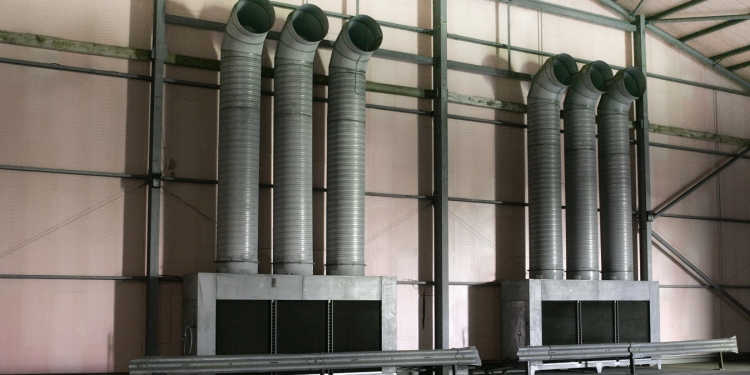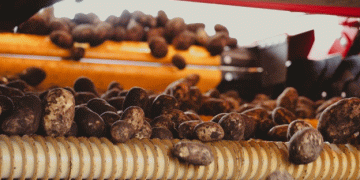Storing potatoes long-term is often challenging and this is especially so if there is a reliance on ambient ventilation. Even in the most favourable seasons, it is seldom possible to hold crops at optimum temperature in ambient stores beyond early May. Here we explore how refrigeration can help deliver on long-term storage.
The availability of sufficient cold air at night-time is usually a constraint in ambient stores; this is exacerbated in any stores where there is no automated (thermostatic) control available as it restricts the chance to grab even short periods of cold, night air to keep temperatures close to set point.

With increasing pressure on ambient systems both in the autumn pull-down period and spring time due to limited cold air availability, the issue is now being compounded by the need to limit air exchange in stores to help retain volatile chemicals within the building for sprout control. So the logical solution, although not necessarily a simple one, is to invest in refrigeration.
New refrigeration system: which option should I go for?
Refrigeration will cut down on the need to change air in the store (notwithstanding the need to flush stores in some circumstances) and will provide on-demand cooling for the store so it can always be kept at the optimum temperature required.
Straightforward direct expansion (DX) refrigeration remains an option albeit with the knowledge that long pipe runs and large coils require a lot of expensive refrigerants. Alternatively, some growers are opting for indirect, glycol-based cooling which uses water/glycol mixtures to remove the heat from the store. Glycol can also be a good solution if there is opportunity to combine cooling of the potato store with other enterprises on site such as use of waste heat for warming a grading area, for example.
What if I already have a refrigeration system?
For those with refrigeration systems already installed, make sure that the system is serviced regularly, has a full refrigerant charge and that the system is compliant with F-gas regulations – you may wish to ask your refrigeration service engineer for help with this or search ‘F-gas regs’.

Replace banned gases with a ‘drop-in’ replacement and try to plan move away from gases that are now on quota (R404A is the most commonly used in potato stores) as leaks will be difficult to repair and replacement gas will become more and more expensive as quotas reduce. Don’t forget to check coil condition too – both in the evaporator (in the store) and the condenser (outside). Clean, unobstructed coils will transfer heat most efficiently.
Call the Storage Advice Line on 0800 02 82 111 for further information on refrigeration or email Adrian Cunnington adrian.cunnington@ahdb.org.uk






